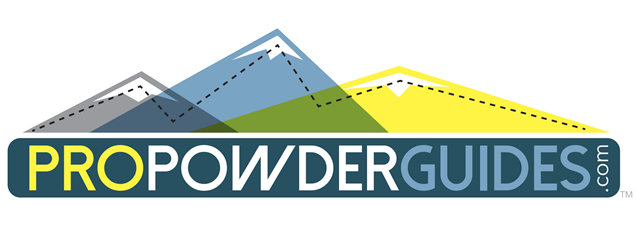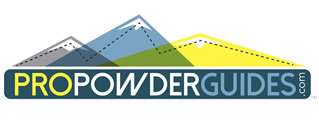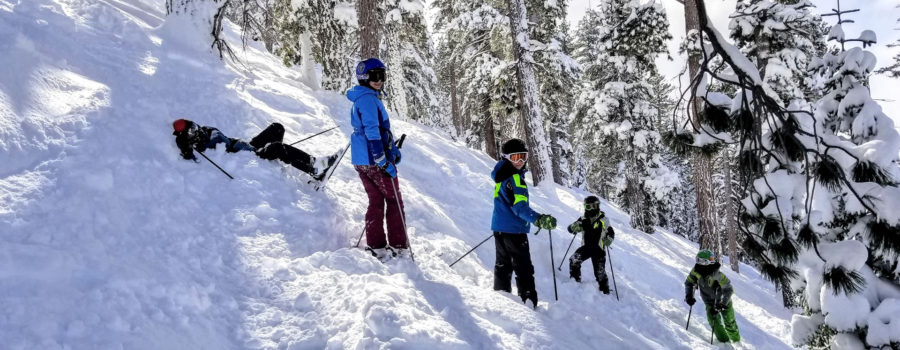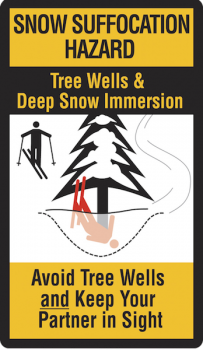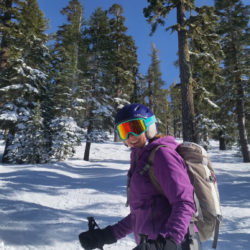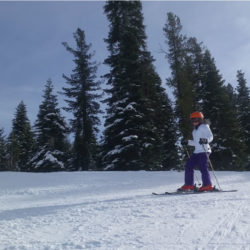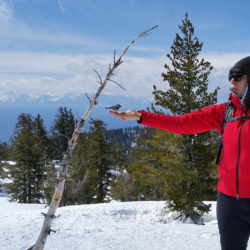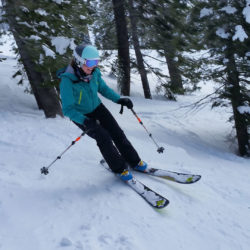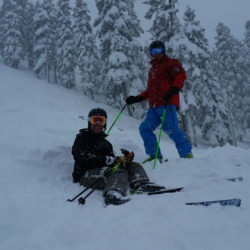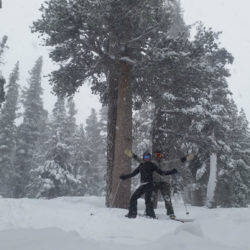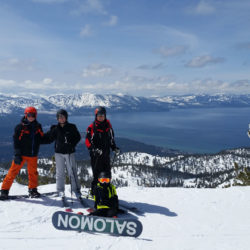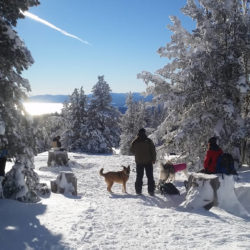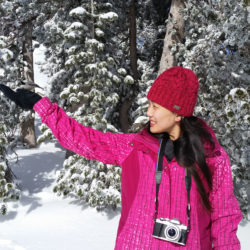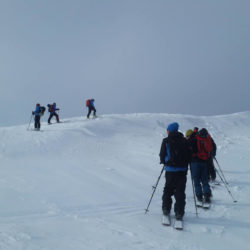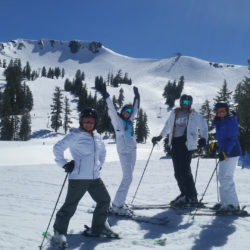✔️ Schedule Me (reserve early!)
❄️ Q: Are You a Non-Skier? A: Try Lake Tahoe’s Best Winter Outdoor Guided Nature Adventure Activity: Snowshoeing ❗️
- >> COMPARE #better4less <<
- Why are Private Lessons Your Best Value?
- Read all our 5 Star Client Reviews
- > Why we are #Better4 Less <
IMPROVE YOUR SKIING SAFELY & QUICKLY. #BETTER4LESS SAVE THOUSANDS OF DOLLARS VS. RESORT SKI SCHOOLS OVER SEVERAL YEARS OF INSTRUCTION. Stop wasting your time and money on resort ski school. Their curriculum is purposely designed to maximize their profits and to slow your progress requiring years of unnecessary lessons to achieve excellence. #BETTER4LESS ProPowderGuides clients report experiencing more improvement in one or two days skiing with us than after years of resort ski school lessons. For the price of a crowded resort group ski lesson with strangers you can enjoy the focus of our Private Ski Lesson. Great value for Families or Friends who’d like to Learn Together. Beginner, Intermediate and Expert Private Ski Lessons around Lake Tahoe.
“I can’t say enough about our day with David! • “It all started with his close attention even before arriving. He called me about a week before the trip just to check in and see what I’d be looking for. A day before the trip, my daughter freed up from work at the last minute and David added her and her husband to the reservation no problem. His instruction was superb … My daughter advanced from dark blue to enjoying double black. He also helped me ton learn how to ‘dance’ down the bumps. Don’t hesitate to sign up and enjoy!“
>> Private Lessons vs. Group Lessons ? <<
***
Current Avalanche Danger
Snow Immersion Suffocation (SIS) Prevention
- Please visit the authors of this SIS Prevention information at deepsnowsafety.org
PROTIP: The easiest was to avoid a SIS accident is to remain on groomed areas and avoid deep snow and tree well areas. Be aware of the recent snowfall and the depth of the loose snow – check local resources for recent snow conditions.
If you venture into UN-GROOMED terrain:
- Ride or ski with a partner and keep your partner in sight at all times
- Ski or ride in control
- Give tree wells a wide berth
- Look at the open spaces between trees not at the trees
- Skiers should remove ski pole straps
Carry safety equipment including:
- Cell phone with resort emergency number
- Transceiver/beacon
- Avalung
- Whistle
- Shovel
- Probe
- Recco
What Is a Snow Immersion Suffocation, SIS?
90% OF PEOPLE INVOLVED IN TREE WELL / SIS HAZARD RESEARCH EXPERIMENTS COULD NOT RESCUE THEMSELVES.
- A tree well/ snow immersion suffocation accident can happen when a skier or snowboarder falls – usually headfirst – into a tree well or deep loose snow and becomes immobilized and trapped under the snow and suffocates.
- In an inverted position you can become trapped under the snow. Breathing becomes difficult as the loose snow packs in around you. Without immediate help from your partner, you may suffocate.
- Prevention of falling into a tree well or areas of deep snow is all-important because the odds of surviving deep snow immersion are low.
- 90% of people involved in Tree Well/ SIS hazard research experiments could NOT rescue themselves. If a partner is not there for immediate rescue, the skier or rider may die very quickly from suffocation – in many cases, he or she can die as quickly as someone can drown in water.
What is a Tree Well?
THERE IS NO EASY WAY TO IDENTIFY IF A PARTICULAR TREE HAS A DANGEROUS TREE WELL BY SIGHT THEREFORE, TREAT ALL TREE WELLS AS DANGEROUS.
- A tree well is a void or depression that forms around the base of a tree can and contain a mix of low hanging branches, loose snow and air. Evergreen trees in particular (fir, hemlock, etc) can have large, deep tree wells that form when low hanging branches block snow from filling in and consolidating around the base of the tree. These voids can be hidden from view by the tree’s low hanging branches.
- There is no easy way to identify if a particular tree has a dangerous tree well by sight therefore, treat all tree wells as dangerous.
- In simple terms, a tree well is a hole or void in the deep snow, which is clearly marked by a tree. You can easily identify and avoid these areas.
When & Where Do Snow Immersion Suffocation Accidents Happen?
THE RISK OF A TREE WELL / SIS ACCIDENT IS GREATLY REDUCED JUST BY STAYING ON GROOMED RUNS.
- Most Tree Well/ SIS accidents have happened during or just after big snow storms or storm cycles.
- In general terms, the more fresh snow the higher the risk. As of 2011 research, an average of four Tree Well / SIS accidents happen each season in the United States.
- Most all Tree Well/ SIS accidents happen in un-groomed terrain. A groomed run is a ski or snowboard run that has been driven on by a snow machine to compact and consolidate the snow.
- Most Tree Well/ SIS accidents happen where there are combinations of deep powder and trees and where lots of powder skiers and snowboarders are seeking powder snow.
- Lots of deep loose snow makes for the best powder skiing conditions. Unfortunately these conditions also significantly increase the chance of a Tree Well/ SIS accident.
- 70% of all Tree Well/ SIS accidents involve tree wells. Deep snow Tree Well/ SIS accidents occur in areas of deep snow, deep snow pockets or terrain that concentrates deep snow such as steep drops, and creek beds.
What To Do In A Snow Immersion Situation:
- More than half of all SIS victims were with partners that did not see them go down.
- Lose sight of your partner and you could lose your friend.
- If you lose contact with your partner, assume they need help.
- Many SIS victims have died while their partners were waiting at the bottom of a lift.
WHAT TO DO IF YOU GO DOWN
PROTIP: In dense tree areas or in poor visibility, ski or ride short pitches and stop to regroup often – stay within sight of your partner!
- Yell or use a whistle to get your partners attention.
- Do whatever you can to keep your head above the surface of the snow including rolling, grabbing tree branches or the tree trunk. If possible, keep your feet below level of your head.
- If you become immersed, make a space around your face and protect your airway – resist the urge to struggle, it could compromise your airspace and entrap you further.
- Stay calm to conserve air.
- Trust your partner is on their way.
- If possible, use your cell phone to call ski patrol or the resort’s emergency number.
WHAT TO DO IF YOUR PARTNER GOES DOWN
PROTIP: In dense tree areas or in poor visibility, ski or ride short pitches and stop to regroup often – stay within sight of your partner!
- Don’t leave to get help – Stay with your partner!
- Call/use ski area app for additional rescue resources. Use a whistle or yell for assistance. If possible, call ski patrol or the resort’s emergency phone number.
- Evaluate scene safety for yourself.
- IMMEDIATELY begin snow immersion rescue efforts.
- Go directly for the airway, and keep it clear, be careful not to knock more snow into the hole. Clear any snow from the airway and continue necessary first aid or extrication effort.
- Do not try to pull victim out the way they fell in. Instead, determine where the head is and tunnel in from the side.
- When tunneling directly for the airway be careful not to knock more snow into the hole. Continue expanding the tunnel to the airway until you can extricate the body. Efficient “strategic shoveling techniques” with multiple rescuers is very useful.
Affordable & Independent Lake Tahoe Discount Private Ski Lessons
Lake Tahoe’s independent, affordable family instructor mountain guides. Safely building beginner to advanced skills for skiing, boarding, snowshoeing and alpine sightseeing.
Lake Tahoe | Northstar | Squaw Valley | Heavenly | Kirkwood | Alpine Meadows | Mt. Rose | Homewood | Diamond Peak | Tahoe Backcountry | Sugar Bowl

